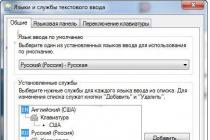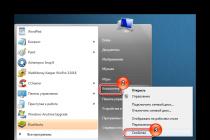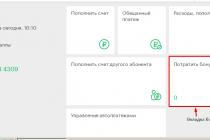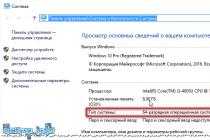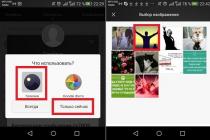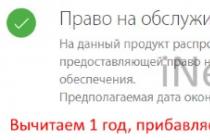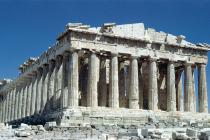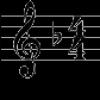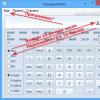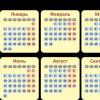In the modern sense, an Internet resource is a collection of electronic documents or files united by one IP address or domain. All Internet sites (or Internet resources, which is equivalent) are located on servers remote from each other, the combination of which is called the World Wide Web. It is she who combines various pieces of information from the network into a single whole.
Varieties of Internet resources
All of them are divided according to several criteria. First, by the availability of their services. The bottom line is that the resources of a particular site can be either open and freely available (registration may be required, but not always), or closed. In the latter case, an invite (a one-time invitation) or an access fee may be required.The second criterion by which sites are divided on the network is its location. It can be accessed from the Internet, when absolutely any user can get to this resource, or in the local network. In this case, the availability of the site is limited to a certain range of IP addresses.
The most difficult criterion by which Internet sites are divided is the scheme for dividing the provision of information to the user. There are so-called Internet portals that have a complex hierarchy, consisting of many pages and including a lot of data. The portal may consist of many interdependent sites united by a single theme, etc. There are also information resources, most often they are devoted to a specific topic.
Internet representations and web services deserve special attention. The purpose of the former is to provide information to users about any business, company, project, etc. Web services are created to perform certain tasks within the current technical development of the Internet (hosting, search, bulletin boards, mail services, forums, etc.)
The term "Internet resource" has historically been assigned to complexes of pages - sites, portals. In general, educational resources can be divided into the following groups: programs for schoolchildren, university developments, scientific works. Developers and compilers of sites present all these information products in different forms.
First of all, these are libraries and thematic collections of materials. They contain textbooks, lectures, methodological developments, articles and other useful works.
Secondly, online (operating when connected to the Internet) training programs are widespread. Such programs, as a rule, exist in the form of tests (on various topics and levels of complexity).
The third category of educational resources is programs that, once installed on your computer, make life easier in many ways. They are able to replace not only a pencil, ruler and calculator, but also provide ready-made algorithms and solutions for almost any task. There are a great many such programs and they differ both in the vastness of the functions performed, and in quality, size and price. A lot of free and shareware programs are distributed on the Internet, they can be “downloaded” and used under certain conditions (for example, there is a time limit for use), or without any restrictions. A useful program can perform a limited number of functions: for example, it can only draw graphs or contain a periodic table, or be a huge reference consultant in several disciplines.
A generally accepted classification of educational resources has not yet developed. For example, in the review by N.N. Soboleva and other resources useful for schools, they are divided into the following sections:
information thematic resources;
official resources;
distance learning projects;
online editions;
exchange of experience and communication of teachers, schoolchildren
Another approach to classification is also possible, for example, according to the nature of the information stored and the way it is presented and used:
libraries and archives of texts and programs,
directories and collections of links,
business cards, showcases...
directories and databases,
test systems;
teleconferences and forums,
demo and interactive models
Let's consider typical examples of educational resources and features of their use.
One of the most popular Internet technologies is a website that incorporates a plurality of information presentation: text, graphics, animation, sound, text and graphic hyperlinks, interactive components. Among the huge number of sites, one can single out those that may be of interest to the field of education. These include: educational portals, electronic textbooks, web quests, websites of educational institutions (schools, universities, IPKiPRO, etc.) and websites of institutions that are interesting for education (banks, enterprises, medicine, scientific laboratories, etc.). )
On the school website, students have virtual classrooms, diaries, a briefcase, desks, items; parents have a student's diary, expert advice, homework, parent meetings; teachers have a methodological base of materials, post information for students and parents; the administration promptly informs, diagnoses, has statistics. The pedagogical concept of the school and its main structural elements determine the basic foundation of the school site, which should act as a means of increasing the efficiency of all aspects of the school's activities. Teachers can conduct their own consultations for parents on the education and upbringing of schoolchildren on the website of their school, use the information bases of the Pedagogical Library. KD Ushinsky, libraries of the US Congress, University of London, Moscow State University, domestic and foreign archives, leading museums of the world. Teachers have the opportunity to use the initiatives existing in the network and, within the framework of these initiatives, organize the work of students in various network projects, or they can take their own initiative and organize a unique telecommunications project.
A web page is an integral part of a website. May contain text, images, hypertext links to other pages or other servers. Physically, it is a file, which is, in essence, the most important concept of an Internet resource, because. Ultimately, it is individual files that are of interest to the Internet user, and all other resource concepts are the union of various files into a complex. The variety of files is great (not only web pages): any of them can be an Internet resource, which, if the user wishes, can be stored on the computer's hard drive. These are programs, text and graphic files, various multimedia files, compiled HTML files, tables, archives, applications, etc.
Educational web quest - pages on a specific topic on educational sites that are connected by a large number of hyperlinks to pages from other sites on the World Wide Web. For example, a page on an astronomy course may have links to the servers of actual observatories, research institute libraries, and space organizations. The efficiency of the work of students depends on the careful selection of links, saving their time searching for the necessary information on the network. The student independently chooses which materials to view in detail and which not. The resources of the domestic Internet are already sufficiently developed to serve as a means for creating educational web quests. One of the well-known Russian quests is the “Defend Baikal” website, developed by teachers and students of the gymnasium from Angarsk. The web quest involves the work of a group of experts according to a certain scheme, which involves the analysis of a large number of information sources, a list of which is given on a separate web page of the site.
The word "portal" came to the Internet from architecture in the sense of "main entrance". This refers to the site from which a person regularly starts his work on the Internet, which he makes the start page of his browser.
The portal must combine web services, content and links to other resources in a way that meets the needs of a large number of users. The main idea behind the existence of the portal is that, having created a certain critical mass of services, it is possible to recruit such a number of users that will be “self-replenishing”, after which the portal traffic grows almost without additional advertising costs.
Educational portal - a site that contains a large collection of structured links to educational resources on the Internet, its own educational pages. The portal is, as it were, the “main entrance” to the educational space of the network. Today, the federal portal "Russian Education" (www.edu.ru), the Russian General Educational Portal (www.school.edu.ru), the portal "Humanities" (http://www.auditorium.ru/), of course -scientific educational portal (http://en.edu.ru/), information support portal for the unified state exam (http://ege.edu.ru/).
Electronic libraries - modern complex information systems - are considered as distributed knowledge repositories hosted on different computers. They provide a special kind of broadcasting service. Most often, access to catalogs of electronic libraries is provided free of charge. However, now there are a huge number of projects that are trying to provide free access to various publications in electronic format, including teaching aids. At the present stage of the development of the Internet, digital libraries represent an area of research and development aimed at developing the theory and practice of data collection, their modeling, data management and their distribution over data networks. The rapid development of the Internet and multimedia technologies in recent years have led to the emergence of methods for creating electronic information collections and have become the technical basis for the libraries of the future. Popular electronic libraries include the Moshkov Library (http://lib.ru), the Sit and Read Network Library (http://lib.km.ru), the Open Russian Electronic Library (OREL) ( http://orel.rsl.ru). Remote access laboratory - a subdivision of an educational organization equipped with real educational and research equipment with remote access to it via telecommunication channels.
It is also necessary to consider in more detail the category of information educational resources - online educational programs.
Of the professional Russian developers, we can note the company "FISICON" (http://www.physicon.ru), which is engaged in the development of educational multimedia computer programs in the field of natural sciences (mathematics, physics, astronomy, chemistry, economics, biology, and others).
Popular knowledge testing systems in various fields are implemented on many educational servers. For example, the site “Testing. Professional assessment of your knowledge” (http://tests.specialist.ru) provides an opportunity to assess knowledge in the field of information technology. Of the 33 tests offered, the most interesting are "Basic computer training" (Windows, MS Office), "Internet technologies" (Internet, HTML, Flash, web-mastering), "Computer graphics" (Corel Draw, Adobe Photoshop, Adobe Illustrator, 3D Max, QuarkXPress), "Administration of computer systems and networks" (Windows, Unix), "Programming" (C, C ++, Delphi.), "Databases" (Oracle, Access), "Office specialties" (Office manager, secretary -Referent), "Accounting" (1C: Accounting 7.7), "Project Management" (Microsoft Project).
Another popular site "On-line Exams" (http://www.examen.ru) offers free exams (more than 40) and tests (more than 50) in many disciplines. There is also a large selection of essays, textbooks, reference manuals, which are formed into sections: "Human Sciences" (human anatomy and physiology, ecology, psychology, anthropology, medicine), "Natural Sciences" (chemistry, zoology, botany, general biology, astronomy, geography, genetics and selection, physics, paleontology), "Social and historical sciences" (archaeology, sociology, philosophy, economics, history), "Art, culture and religion" (architecture, literature). The exams presented on the server can be very useful. For example, Traffic Police Exam, International English Exams, Microsoft Certification Exams, School Exams.
The educational site "Anri education systems" (http://www.anriintern.com) contains a huge number of courses, lectures and useful materials not only for schoolchildren and students. The site offers not only to test existing knowledge, but also to acquire additional ones. For this, courses of various subjects are offered, for example, the course of "European Regional Studies".
The 50-lesson "Business Course" provides information on the practical steps to take when starting a business and the requirements to follow.
Courses "On programming, development and operation of computers" are divided into several thematic sections. The textbook makes it possible to independently write programs and get acquainted with the basic algorithms and programming techniques. The site "Anri education systems" has a large selection of courses for self-education. For example, the following projects have been developed for English learners: "English in proverbs and sayings", "Slang, aphorisms and colloquial speech in English", "English through British legends, myths and fairy tales", "English through reading the classics", "Modal verbs", "Idioms", "Learn English jokingly". Courses in German, French, Spanish, Czech, Chinese and Russian are open for study.
In other disciplines, courses have been developed: "Fundamentals of Ecology", "Historical Courses", "Geographic Courses", "Marketing. Business in networks”, “Economics”, “Method of concluding contracts”, “Blind typing method on the keyboard”.
It should also be noted library resources, electronic archives in all branches of knowledge and arts, electronic media, etc., playing the basic role of primary sources, which, however, have very complex and branched organizational and production structures. Students on the Internet search for the necessary information in information databases to solve an educational problem, get acquainted with different points of view on the problem under study, take part in various national and international network initiatives (olympiads, quizzes, competitions, projects), correspond with peers in their native language. and foreign languages, participate in domestic and international chat sessions, video, audio, teleconferences on various issues, publish their creative and journalistic works on the Internet (essays, drawings, images of crafts, articles, photographs, etc.), study at distance courses in academic subjects, take part in testing conducted by universities. They also create information and educational web resources themselves.
Internet resources: tools and tools for creating and developing a business
Each Internet resource has its own functions and value, which can be used to build a successful Internet business.
What are they and what are they used for??...
When the Global Network is chosen as the main place of activity, the need for Internet resources is obvious. Only with their help you can break through to the target audience, provide the necessary information, get a response, make sales, and make a profit.
Types of Internet resources
There is a huge number of Internet resources, all of them perform typical functions, according to which they can be used in business:
- Internet resource - Website. An information resource that is dedicated to a particular company, phenomenon, topic, event, and so on.
- Internet resource - Community in a social network. Resources on which a group of people is registered, interested in one idea, having common views. The community posts information on a specific topic or several topics, and discussions are held.
- Internet resource - Blog. Thematic Internet resource, usually owned by one person. Here articles are published, as a rule, on a certain narrow topic. The functionality plan usually provides for the ability to leave comments and communicate.
- Internet resource - One-pager. A resource consisting of one page, capaciously and clearly revealing one specific topic, talking about a product, service, phenomenon, person.
- Internet resource - Portal or network of sites. An informational or interactive resource that involves a large number of visitors and heavy traffic. The entire network has a common domain name.
- Internet resource - Internet service. This is a resource that looks like directories, storage or exchanger.
- Internet resource - Newsletter. This resource does not have a domain name, but is a tool that is capable of mass informing.
Understanding the possibilities each Internet resource and knowing how to use them to your advantage, much more likely build a successful and profitable business that will be known to thousands and even millions of people.
Online resources are business opportunities that work for you!
Internet resources are host - machines, machines - clients, programs (for example, WWW server, FTP server, etc.), information resources (files on servers, host - machines and machines - clients).
All resources on the Internet have their own address. The full address (identifier) consists of two parts: the IP address of the machine (or the host machine, or the global network), and a URL to identify resources on this machine (sometimes it is considered that the URL includes the IP address). An IP address has a domain structure and can be represented in symbolic or numeric form.
Host - the machine is a domain, i.e. an administrative unit that has the right to provide addresses to subordinate objects that form the "tree" of the host.
The IP address syntax specifies that the fully qualified computer name includes the first-level domain name as the rightmost element. Subdomains are listed to the left of the first level domain and are separated from each other by a dot.
For example, mesi.ru/ is the full name of the host computer of the Moscow State University of Economics, Statistics and Informatics (MESI), registered in the top-level domain “ru” (from RUssia).
All computers connected to this host are combined into a group that has the same value of the first two levels of the address. If the university has an information management institute (im), then the host computer located in this unit forms its own domain (of a lower level). The full IP address of this new domain will be:
If one of the host computers in the information management institute is given the name "cafedra_vms", then the full IP address of this host will be:
cafedra_vms.im.mesi.ru/
The domain addressing system ensures that no two hosts on the entire Internet have the same address.
A name can contain any number of domains. But most often used names with the number of domains no more than three - five.
Each group that has a domain can create and modify addresses under its control. For example, if a new subdivision is created at an institute with the address im.mesi.ru - an analytical research laboratory, then the institute should not ask anyone for permission to name its host computer. It is enough to add a new name (for example, analysts), as a result of which any Internet user will be able to access this computer at the address:
analysts.im.mesi.ru/
For subdomains (that is, lower-level domains), any non-repeating names can be used. But for the name of the top-level domains, there is a standard (agreement): such a name can be two letters that define the country in which the address node is located (there are 244 such names in total): ru - Russia; su - Soviet Union; de - Germany; fr - France; uk - UK; ua - Ukraine; kg - Kyrgyzstan; etc.
or three letters indicating the type of activity: com - commercial organizations; net - network organizations; edu - educational and scientific institutions; gov - government agencies; mil - military organizations; org - other organizations.
A second-level domain is a unique name for a host computer on the Internet, which should not be repeated in a first-level domain (this is monitored by RIPN).
A third-level domain can also mean a host computer name unique to a second-level domain, but it can also be a virtual object - the name of a Web site located on a host computer registered in a second-level domain.
Currently, second-level domains are being registered in Russian, in the languages of the CIS and Baltic countries. It is planned to use hieroglyphs in domain addresses.
Numeric IP addresses consist of four integers, each of which does not exceed 256. The numbers are separated from each other by dots: for example, 194.84.93.10 or 200.5.78.175. Numerically, an IP address is 32 bits long.
Names are converted to numeric addresses automatically using the Internet DNS (Domain Name System) service. DNS servers store information about the correspondence between symbolic and numeric names.
Users work with digital addresses quite rarely: when connecting to the Internet, the digital address of the DNS server is indicated; when working with the Intranet, the numeric address is used to indicate its WWW server.
The domain addressing system (IP addressing) is used to address electronic computers connected to the Internet. But on these computers there are a large number of various resources (databases, file libraries, Web sites, mailboxes, ...), which are addressed using the URL (Universal Resource Lokator) - Universal Resource Locator. URL is the address of any Internet resource, including the IP address of the computer on which this resource is located, indicating the protocol by which this resource should be accessed. URL example:
Here http is the name of the protocol (WWW); ie - directory name;
Here the port number is separated from the IP address by a colon.
Usually ports do not need to be specified - they are used by default.
Types of protocols modern programs also recognize independently. Therefore, instead of http://www.kat.ru/users, you can use www.kat.ru/users . Now, if this directory needs to be accessed using a different protocol, then it must be specified explicitly.
Email addresses consist of two parts, separated by the @ symbol. To the right of this symbol is the IP address of the computer on which the subscriber's post office is located. To the left of it is the name of the subscriber. For instance:
Navigating the Internet (i.e. moving from one resource to another) can often be done without a set of long URLs, using so-called “hyperlinks”. Hyperlinks can be textual or graphical. Each hyperlink consists of two parts: an index (Anchor) and an address part (URL reference). When using text hyperlinks, the user sees a pointer - a specially highlighted word or group of words (usually the pointer is highlighted in blue and underlined). When using graphical hyperlinks, pointers are not highlighted in any way. Just a picture or part of it is made active. You can detect any hyperlink with the mouse cursor - if it hits the pointer of a text or graphic hyperlink, then its shape changes to a hand clenched into a fist with a bent index finger.
The address part of the hyperlink is not visible to the user. It is the full URL - the address of the object to be navigated to. It is located in the description of how it is necessary to display the resource used on the screen, i.e. in HTML tags.
If the resource is located on your computer, then instead of the URL, the full address of this resource is typed in MS DOS notation. For example: d:\institut\web-site\index.htm .
2.2. E-mail and its use for searching, sending and receiving information.
Purpose and scope of e-mail protocols.
On the ISP host computer, mailboxes are allocated for users, in which all correspondence incoming for them is accumulated.
When a user connects to a node (ISP host computer), letters from the corresponding user's mailbox are sent to his computer. In this case, the user remains connected to the Internet (and pays) only for the time necessary to exchange correspondence with the mailbox. The rest of the work is done offline. This is one of the benefits of email.
For the normal functioning of modern e-mail on the host computer, it is necessary to have two mail servers: outgoing mail server SMTP (Simple Mail Transfer Protocol) - a simple transport mail protocol - accumulates letters sent by subscribers of this node and sends them to the addresses indicated in the letters; incoming mail server POP3 (Post Office Protocol) - a mail protocol - receives correspondence from other nodes, delivers it to mailboxes and can recode incoming messages, for example, from KOI-8 to Windows 1251.
Before the advent of SMTP and POP3 protocols, the UUCP protocol (Unix to Unix Copy Program) was used to work with e-mail, a copy program from Unix to Unix. This protocol is not an Internet service and does not use the TCP/IP protocols. But some global computer networks work with e-mail using this protocol.
Recently, another Internet protocol for working with e-mail has appeared: MIME (Multipurpose Internet Mail Extension) - a multipurpose e-mail extension for the Internet. It provides the transfer of data that, in addition to pure text in KOI-8, ASCII or Windows 1251 format, contains data in the binary system, which allows you to send graphics, audio and video files interspersed with text, while previous protocols only allow you to connect binary files to the main text of the letter as an additional unit accompanying the text of the letter.
Which of the following protocols are available to the client for work
Depends on the ISP, on what e-mail servers are installed on the host computer.
Internet Mail program.
This program is included with the Internet Explorer browser and installed with it.
When the program is launched for the first time, the Internet Mail setup wizard is initiated, with the help of which the necessary parameters for working with e-mail on the Internet are set. When the program is configured, the setup wizard is not called.
When setting up e-mail, you must specify your name or pseudonym to the program, by which you will be contacted during correspondence; your e-mail address (which is determined by your ISP); addresses of incoming (POP3) and outgoing (SMTP) e-mail servers; password for access to e-mail; method of connecting to the Internet (via a local network, manually or using a modem).
When accessing the program, the main working window is called up on the screen.
The title of the window and the menu in it are standard for Windows 95.
Below the menu bar is a toolbar with buttons: “Create message”, “Send to sender”, “Reply all”, “Forward”, “Deliver mail”, “Delete”.
Under the line of the toolbar there is an opening list “Folders”, which is used to work with incoming and outgoing correspondence.
The central part of the program window is divided into two halves: the contents of the open folder are displayed in the upper part; at the bottom - texts of letters.
At the very bottom of the program window is the status bar, in which the program's messages about the actions it performs appear.
The “Message” menu command allows you to fine-tune the program (the “Options” option of this command is used for this). Fine-tuning allows you to change the parameters set by the program setup wizard, select a font, enable spell checking, etc.
To access Internet Mail from Internet Explorer, click on the “Mail” button in the Internet Explorer window menu.



